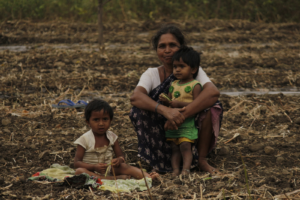Key Points
- Over 1 billion people have untreated vision problems
- Seva Foundation helps provide affordable eye care
- Every $1 spent on eye health yields $36 benefit
- Glasses and surgery can greatly improve productivity
- Better vision eases burden on families and caregivers
Did you know that over a billion people worldwide have vision problems that haven’t been taken care of? That’s a huge number of folks who can’t see clearly. But there’s an organization called the Seva Foundation that’s working hard to help fix this problem.
The Seva Foundation recently published a paper that says for every dollar spent on eye health, there’s a $36 benefit to society. That means if we invest in helping people see better, it pays off in a big way – much more than other types of aid programs.

The head of the Seva Foundation, Kate Moynihan, said that this is a global health crisis, but her organization knows how to solve it in a way that’s effective, affordable, and safe. She believes that if we can prevent unnecessary blindness, it will help make the world a better place.
The Seva Foundation looked at 21 different studies from 10 countries to come up with that $36 benefit for every $1 spent. These studies included things like giving schoolchildren eye exams, providing glasses to farmers, and doing cataract surgeries.
One of the researchers, Brad Wong, gave an example of how this works. He talked about a study they did with tea pickers in India. Many of the older workers had trouble seeing up close, which made it hard for them to pick the tea leaves. When they were given glasses, they could pick 22% more tea than before. The cost of the glasses and eye exam was paid off in just two days because of how much more productive the workers were. And those workers were able to earn more money and better support their families.

Moynihan says that it only costs about $10 to provide someone with good vision for a whole year. That’s a small price to pay for such a big impact. And Wong points out that the solution is simple – just glasses and cataract surgery, which we’ve had for a long time.

Helping people see better doesn’t just boost the economy, it also makes life easier for their caregivers. In many developing countries, multiple generations live together, with the older folks often taking care of the young ones. If the older people can’t see well, that makes it much harder for them to provide that care.
So in a nutshell, investing in eye health is a win-win. It helps people live better lives and contributes to a stronger society overall.
See the SEVA report here: https://www.seva.org/site/DocServer/SevaPolicyPaper_EyeHealth.pdf